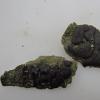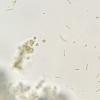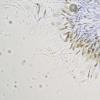
17-01-2026 19:35
Arnold BüschlenHallo, ich suche zu Cosmospora aurantiicola Lite

15-01-2026 15:55
 Lothar Krieglsteiner
Lothar Krieglsteiner
this one is especially interesting for me because

16-01-2026 00:45
Ethan CrensonHi all, On decorticated hardwood from a New York

18-01-2026 12:24
Hello.An anamorph located on the surface of a thin

08-12-2025 17:37
 Lothar Krieglsteiner
Lothar Krieglsteiner
20.6.25, on branch of Abies infected and thickened

10-01-2026 20:00
Tom SchrierHi all,We found picnidia on Protoparmeliopsis mur

13-01-2026 07:28
 Danny Newman
Danny Newman
Chlorociboria glauca on indet. decorticate logThe
Eutypa or Diatrype sp on Salix
Watt John,
05-09-2017 12:27
Some texts disagree on presence of paraphyses in some of these species.
I had a look at the Salix associated species on this website but didn't seem to be one of those.
Not even quite sure whether it be Eutypa or Diatrype though it does look like Diatrype bullata, but for the paraphyses.
I do understand there is some fluidity amongst the taxonomy of this group.
John Watt
Ormskirk,
England





